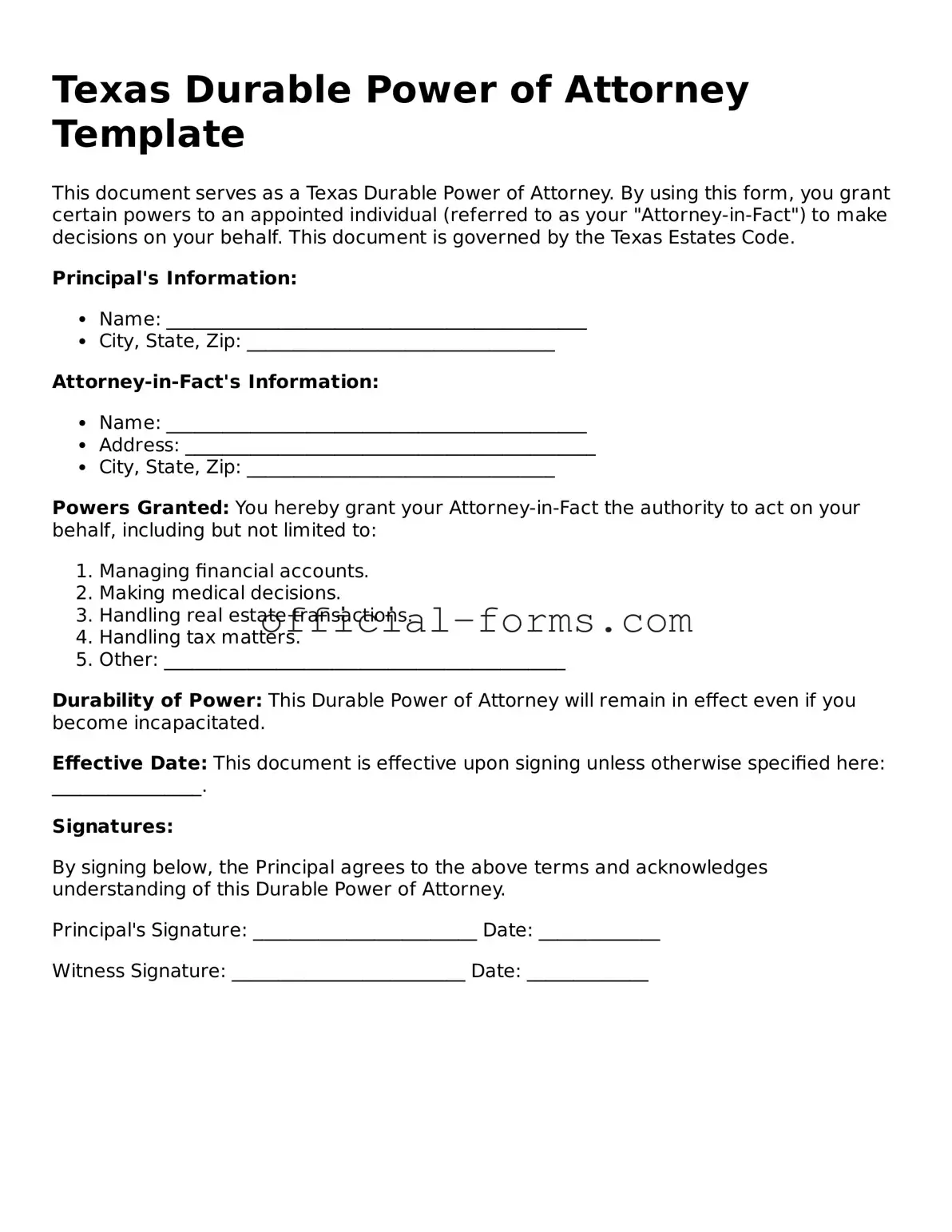Official Texas Durable Power of Attorney Document
A Texas Durable Power of Attorney form is a legal document that allows an individual, known as the principal, to designate another person, referred to as the agent, to make financial and legal decisions on their behalf. This form remains effective even if the principal becomes incapacitated, ensuring that their affairs can be managed without interruption. Understanding the nuances of this form is essential for anyone considering this important legal tool.
Open My Durable Power of Attorney Now
